11 Ways To Attract Deer To Your Yard
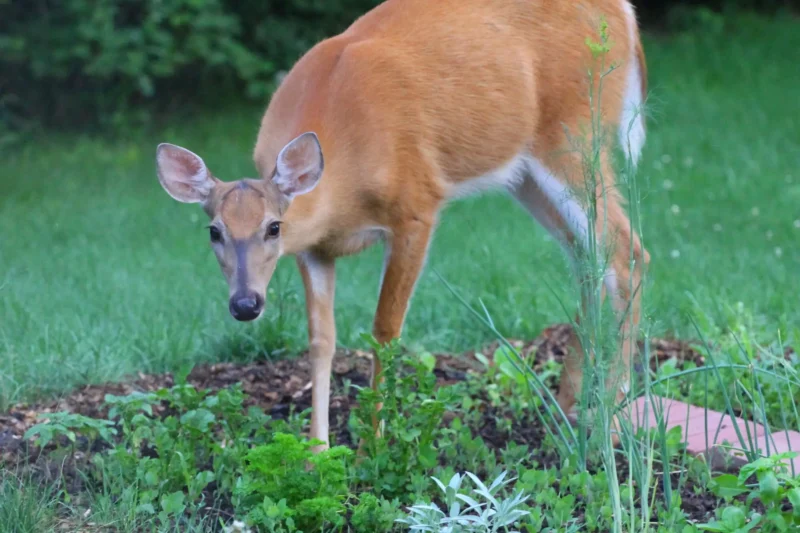
Have you ever been curious about enticing deer to visit your yard? Maybe you enjoy watching these beautiful creatures, or perhaps you’re an avid hunter looking for a prime spot. Whatever your reason, creating a deer-friendly environment is easier than you think. By providing shelter and cover, planting the right vegetation, and offering water and mineral sources, along with food plots filled with clover and fruit trees like apples or oaks, you can attract more deer to your property.
Creating A Deer-Friendly Environment
Deer are majestic animals known for their agility in running through fields and gracefully jumping over obstacles. To create an inviting space for them, consider the following steps.
Provide Shelter And Cover
Deer need places to rest during the day without being exposed. Provide them with shelter areas such as thick brushy covers near woods lines or hedgerows around pastures.
Plant Deer-Attracting Vegetation
Planting vegetation like chicory, red clover, or orchard grasses along the edges of woodlands provides good feeding opportunities. These plants offer high-quality nutrition throughout most of the year. White-tailed bucks love browsing on fresh growth from apple tree shoots, making apple orchards perfect habitat additions.
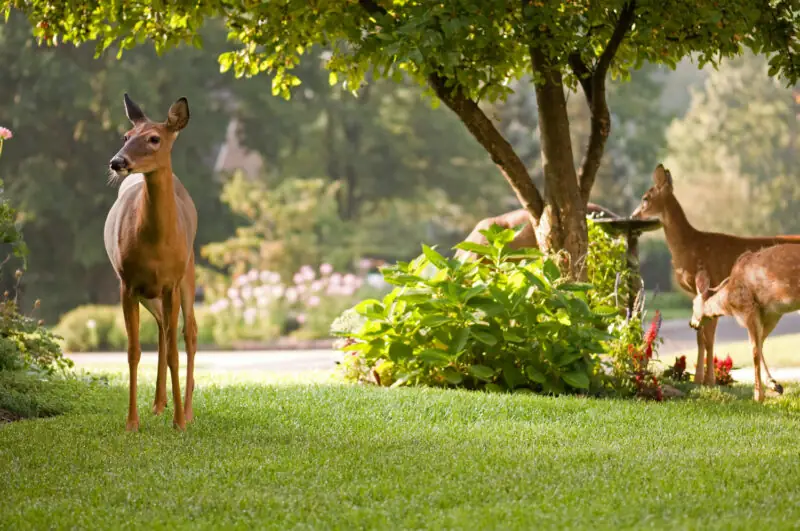
Offer Water And Mineral Sources
Set up water stations within easy reach by creating small ponds near wooded areas. Provide salt licks to supplement minerals lost through sweating and urine, which support bone development and overall health.
Food Sources for Attracting Deer
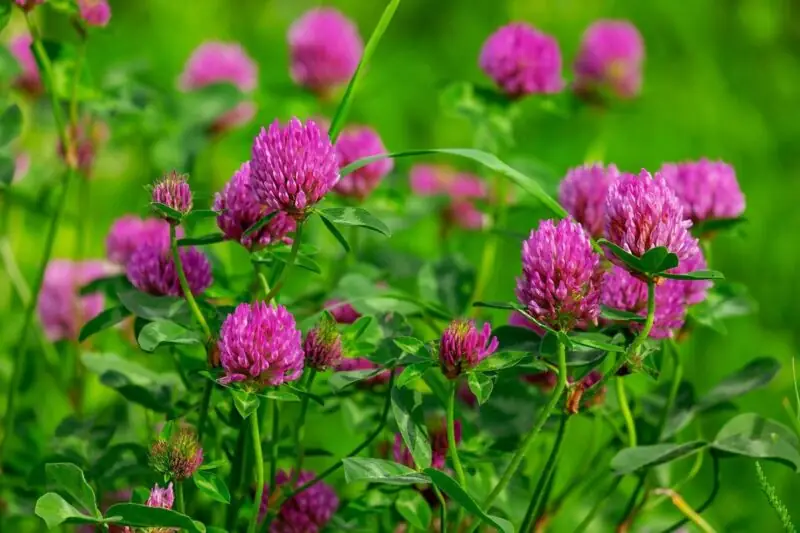
Food is a main reason deer visit your yard, so provide them with a variety.
Food Plots: Clover, Tall Grasses, and Wildflowers
Plant food plots filled with clover, tall grasses, or wildflowers. These plants grow fast, providing nutritious meals throughout different seasons and helping sustain populations even during dry spells.
Fruit Trees: Apple and Oak Trees
Fruit trees like apple and oak offer excellent feeding opportunities and shade spots for deer. Planting fruit tree orchards around edge areas creates an inviting environment full of delicious treats.
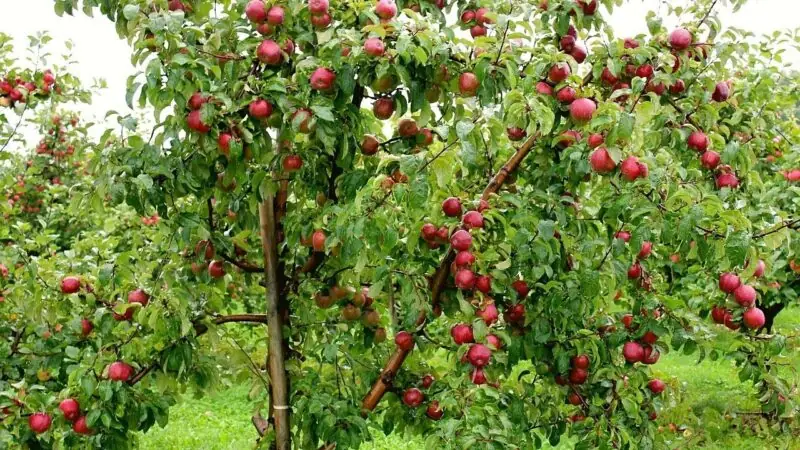
Feeders: Tips For Proper Placement And Filling
When considering adding feeders to attract more deer, keep these tips in mind:
- Choose proper feeder placement – place it away from roads and buildings to avoid spooking deer.
- Make sure it’s at waist height, allowing easy access without obstructing views.
- Fill regularly – refill every few days to prevent spoilage and buildup of bacteria.
- Offer appropriate feed types like maize, corn, wheat, soybeans, and alfalfa pellets, depending on the season, availability, and preferences of the local wildlife population.
Deer Lures and Attractants
Attracting deer to your yard can be challenging, but with the right tools, you can make it happen. Using various types of lures and attractants is an effective way to bring deer onto your property.
Deer Scents: Using Deer Urine Effectively
Using scents or urine from other animals may seem odd, but it’s a proven successful method. Many hunters use this technique when tracking down their prey in the field. There are different options for using deer urine as a lure, depending on the desired effect:
- Buck Urine: Attracts male deer during rutting season.
- Doe Estrus Scent: Simulates female pheromones that entice males.
However, before applying any scent in your garden, make sure it’s legal in your state, as hunting laws vary between states.
Salt Blocks and Mineral Licks
Another way to draw in whitetails is through salt blocks or mineral licks. These provide essential nutrients, including sodium chloride, calcium carbonate, and dicalcium phosphate dihydrate. These minerals are especially important during droughts or winter seasons when food sources are scarce.
Homemade Deer Attractant Recipes
If you prefer homemade solutions, there are plenty of recipes online. These natural mixtures can be made from items found at home, such as molasses mixed with corn kernels or peanut butter mixed with oats. Apple-flavored gelatin powder dissolved in water can also be sprinkled over grassy areas near local deer herds. Remember, moderation is key to avoid leading deer away.
When using deer lures and attractants, consider the safety of wildlife and domestic animals. Some commercial products may contain harmful chemicals, so double-check labels before purchasing or making your own mixture at home.
Making Your Yard a Safe Haven for Deer
Deer are beautiful creatures that can add life to any yard. Attracting them to your property also means taking responsibility for their safety and well-being. Keep in mind what it takes to make them feel safe on your land.
Managing Pets and Their Impact on Deer
Pets, especially dogs, can pose a threat to deer visiting your property. To minimize their impact, consider keeping dogs inside or leashed when unsupervised. Outdoor cats may also pose problems as they could kill small mammals or transmit diseases to pregnant does. Try putting bells on their collars to alert prey.
Lighting and Fence Considerations
To help deer feel secure while grazing at night, place lights along paths leading to food plots and install fencing around gardens. Avoid bright floodlights near windows facing forested areas. Remember, bright exterior lighting attracts insects like beetles, which are essential pollinators. Use yellow bug lights instead of red, white, or blue bulbs that attract them.
Creating Transition Corridors and Thermal Refuges
Deer need safe pathways between different areas of their habitat. Creating transition corridors, such as planting hedges or shrubs along fence lines, can help deer move around without feeling exposed.
Thermal refuges are important during winter months when temperatures drop and snow covers food sources. To create thermal refuges, leave brush piles on north-facing slopes, plant evergreens near feeding stations, and construct simple shelters with old pallets covered in tarps. These measures create microclimates that promote survival in harsh weather conditions.
Frequently Asked Questions
Are you a beginner in the realm of enticing deer to visit your yard? Do you have questions about what works and what doesn’t when it comes to luring these beautiful creatures onto your property? Perhaps some of these frequently asked questions will help answer those burning queries.
To attract deer to your yard, provide a welcoming environment by planting vegetation they love, setting up food plots or bait stations, and providing water sources. Make sure to research local regulations before taking any action.
You can feed deer with corn, apples, and other natural foods they enjoy. Additionally, plant vegetation they love, such as chicory, red clover, and orchard grass. Providing a variety of food sources will help keep deer in your yard.
To keep deer in your yard safely, install fencing designed specifically for wildlife and use motion-sensing lights to deter them from unwanted areas. Be mindful of nearby roads and ensure you’re not encouraging deer to come too close to traffic.
Deer love to eat a variety of foods, including corn, apples, acorns, and various types of vegetation such as chicory, red clover, and orchard grass. Offering a variety of these food options will help entice deer to visit your yard.
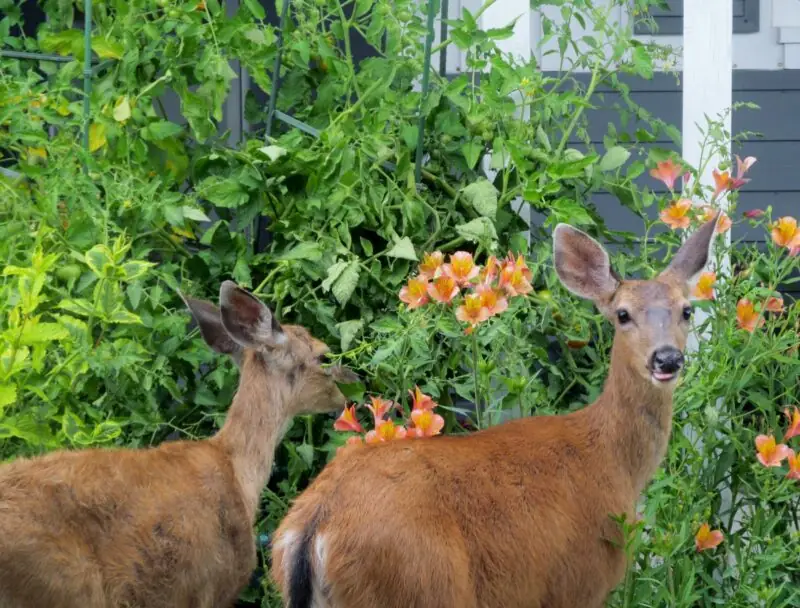
Yes, you can use deer feed to attract them to your yard. Commercial deer feed is designed to be nutritious and appealing to deer. However, make sure to research local regulations before setting up any bait stations or food plots.
When it comes down to it, food is king. Deer are drawn in by a variety of different food sources. These include fruit trees like apples and oaks, clover and tall grasses found in food plots, as well as homemade attractants made from ingredients like corn or molasses. Providing water sources such as creeks or ponds can also be a major attraction for thirsty bucks.
While peanut butter may seem like an easy way to attract hungry whitetails with its sweet aroma, there’s no scientific evidence that proves this method actually works. In fact, many wildlife experts discourage using human foods altogether. They may not provide adequate nutrition for wild animals. Besides, critters such as raccoons could end up stealing all the bait before any deer even come close! Instead, stick with tried-and-true methods. These include planting natural vegetation or setting out salt blocks specifically designed for wildlife consumption.
Winter weather conditions mean less available foliage on trees. This makes them much less attractive than during other seasons. However, you can introduce plants into your garden that thrive under harsher climates. These still manage enough nutrients, so deer don’t go without eating during their usual feeding hours (early morning & late evening). Plants like chicory offer essential vitamins, while red clover provides rich protein content needed especially during colder months. That’s when energy expenditure tends towards maintaining body heat rather than actual movement around open areas.
Another tip is to scatter fallen branches throughout your garden. This creates a natural shelter and cover for deer from harsher weather conditions. It can help them feel more comfortable in your yard and provide protection against predators or other wildlife that may be lurking nearby.
Attracting Deer to Your Yard: Tips and Resources
Now that you know how to attract deer to your yard, let’s talk about some additional resources. These resources will help you create a welcoming environment for these beautiful creatures while also ensuring their safety.
Easy-to-Grow Plants That Lure Deer to Your Property
One of the easiest ways to attract deer is by planting vegetation that they love. Here are some easy-to-grow plants that will lure them in:
- Chicory: This plant grows quickly and is perfect for food plots.
- Red Clover: A great addition to any food plot or garden as it attracts both bucks and does.
- Orchard Grass: Plant this grass around your property line; it produces high yields of nutritious hay that mature whitetail deer absolutely love.
Remember, not all types of vegetation work equally well across different regions, so make sure to research what works best in your area before planting anything.
Preventing Deer From Leaving Your Yard
While we want our yards to be inviting places for deer, there are times when we need them gone. Whether they’re eating up our gardens or posing a danger on nearby roads, here are some things you can do to prevent them from leaving unwanted areas:
- Install motion-sensing lights – this can startle away curious deer.
- Cover prized plants with netting – particularly if initially planted near trees.
- Invest in fencing made specifically designed against wildlife animals, like deer.
It’s important to always keep an eye on pets too, since dogs might chase off wild critters who would normally graze peacefully nearby.
The Benefits and Downsides of Attracting Deer to Your Yard
Attracting wildlife into your backyard may seem appealing, but there could be downsides worth considering before investing time, money, and energy into becoming more attractive towards nature’s four-legged friends.
Benefits:
- Increased biodiversity – providing habitats leads to more variety among species.
- Natural pest control – deer eat insects and smaller animals which may damage crops.
- Enjoyment – watching these majestic creatures in their natural habitat can be a very fulfilling experience.
Downsides:
- Plant destruction – Deer often munch on shrubs, plants, and flowers which take effort to replace.
- Safety hazards on the roadways – It’s best not to encourage wildlife near roads due to high incidents of collisions that could lead to serious injury or even death for both animals and motorists.
Conclusion
In conclusion, attracting deer to your property requires patience and careful planning. Knowing what deer like to eat, the types of plants they prefer, and how to set up a deer feeder can help you invite these gentle creatures to your backyard. Keep in mind the importance of safety measures, such as fencing or lighting fixtures, to protect both humans and animals. Remember that deer are smart, and providing a variety of food sources will keep them coming back. Research local regulations before setting up any bait stations, and use these tips to create a welcoming environment that will attract deer and maintain a healthy local deer population year-round.